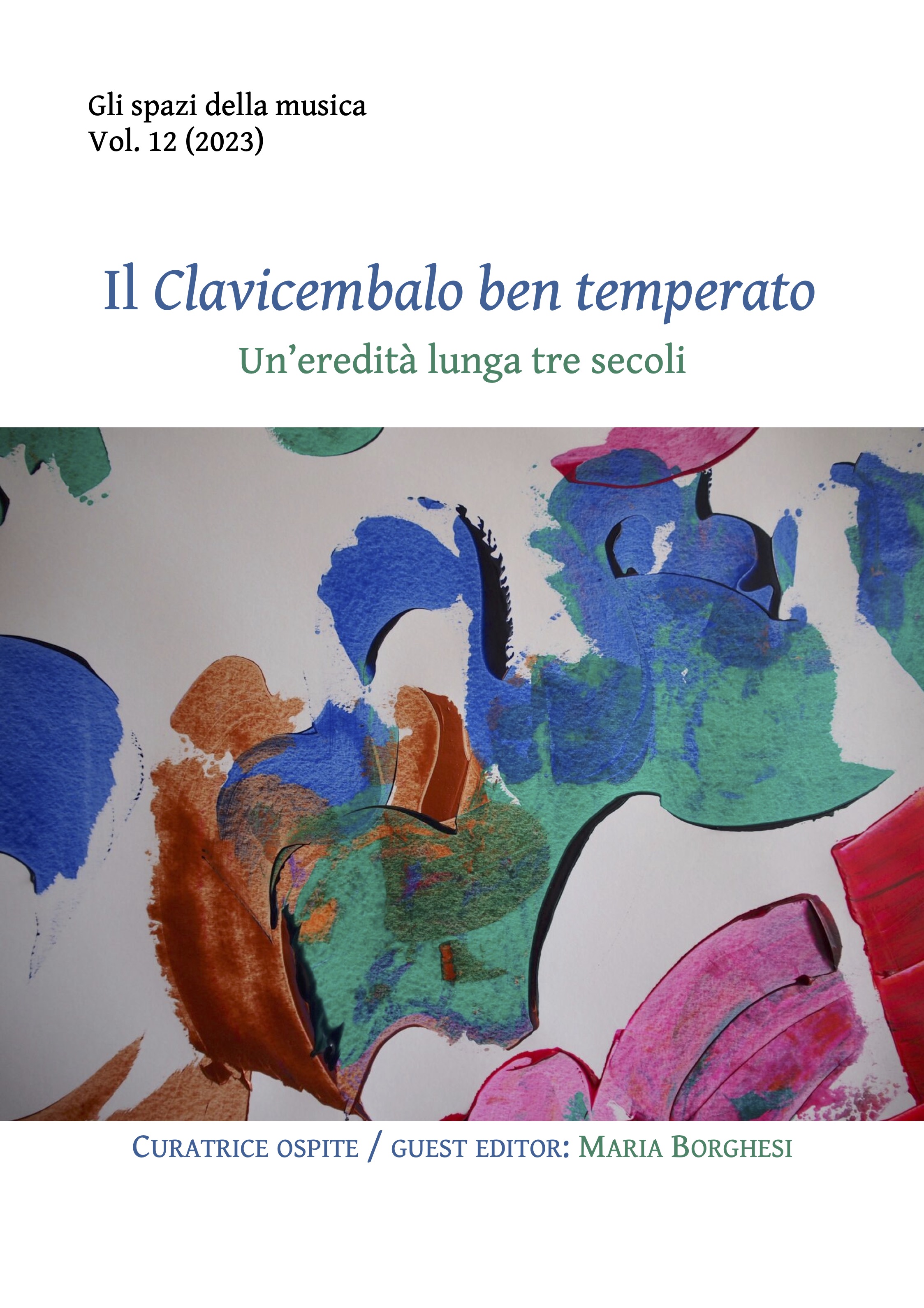Che cosa pensava realmente Bach degli accordi di settima diminuita?
Sull'armonia del Libro I del 'Clavicembalo ben temperato'
Abstract
Musical analysis has among its aims that of bringing to consciousness the sense of harmonic processes, as a point of balance between the intentional horizon of the composer and that of his interpreter. In the history of theories of harmony, however, this dialectic is often unbalanced, at the point of leading to interpretative arbitrariness. Considering density and deepness of Bach's harmony, we often observe some anachronistic distortions in its interpretation; the conception of the diminished seventh chord is an emblematic case - in the view of the great role it has in his harmonic lexicon.
Retracing the theoretical line that led to a "conferred ontology" to the chord (as a dominant ninth with an imaginary root), the essay evaluates the inconsistency of this vision in relation to the compositional choices that Bach makes in Book I of the Well-Tempered Clavier and in other pages of his repertoire. Far beyond the widespread tendency to consider diminished seventh harmony as a cliché, an examination of the above-mentioned texts reveals a microcosm of technical and expressive variants that have not yet been fully explored. Among these elements, we can mention (1) the full unfolding of the chord's enharmonic potential, albeit within a narrow range of possible tonal excursions; (2) the peculiar use of the chord's recursive properties, in chromatic progressions cycles - a manifest continuity in Bach between practice and theoretical instances; (3) the search for contrasts of sound levels - with the chord on various types of pedal (even in very brief extension, which further enhance the equivocal idea of a "conferred ontology" of the chord; (4) a wide morphological range, between full autonomy of the chord on the one hand, and purely linear and contrapuntal agglomeration, on the other.
Downloads
Published
How to Cite
Issue
Section
License

This work is provided under the terms of the Creative Commons license Attribution - Noncommercial - No Derivative Works 3.0 Unported. The authors maintains all the the rights of the articles published in «Gli spazi della musica», included the publication rights.


